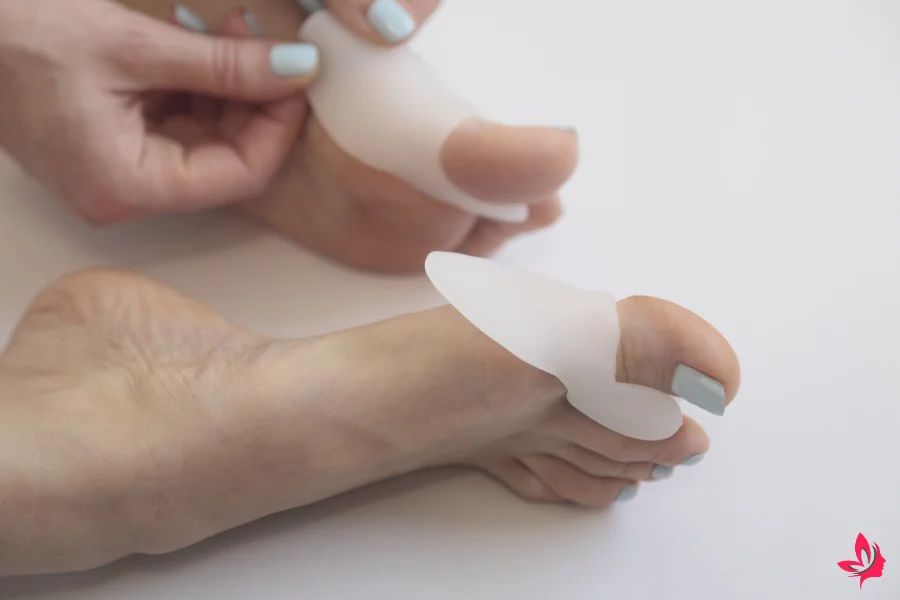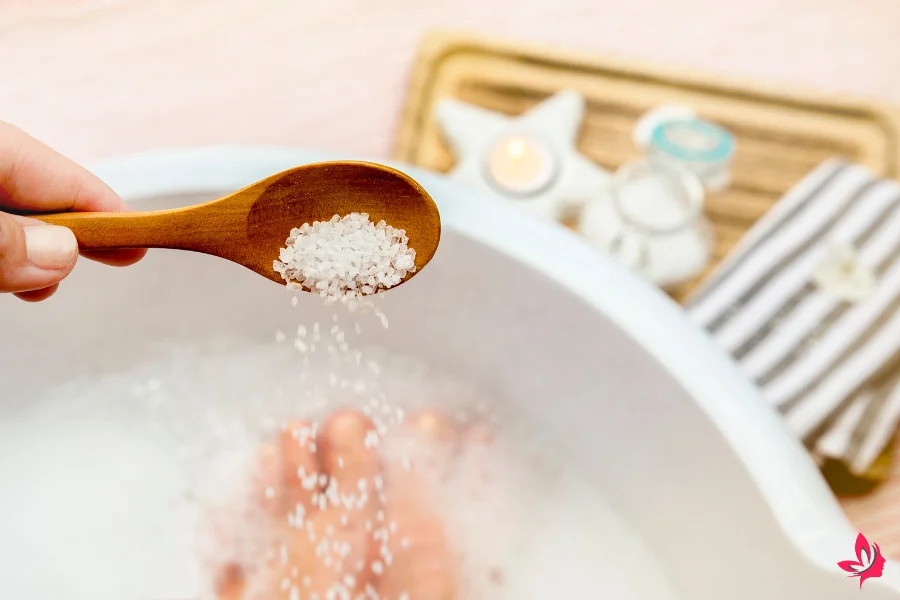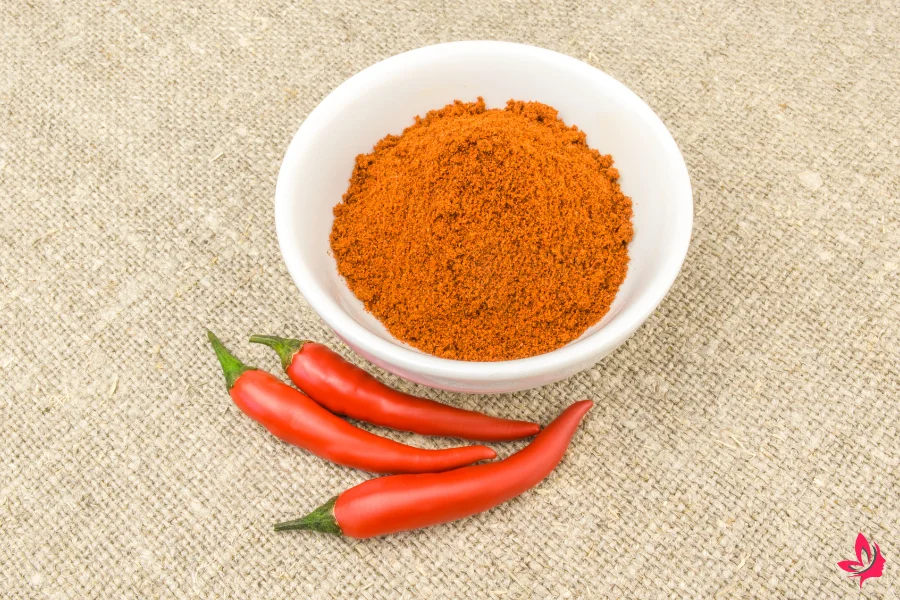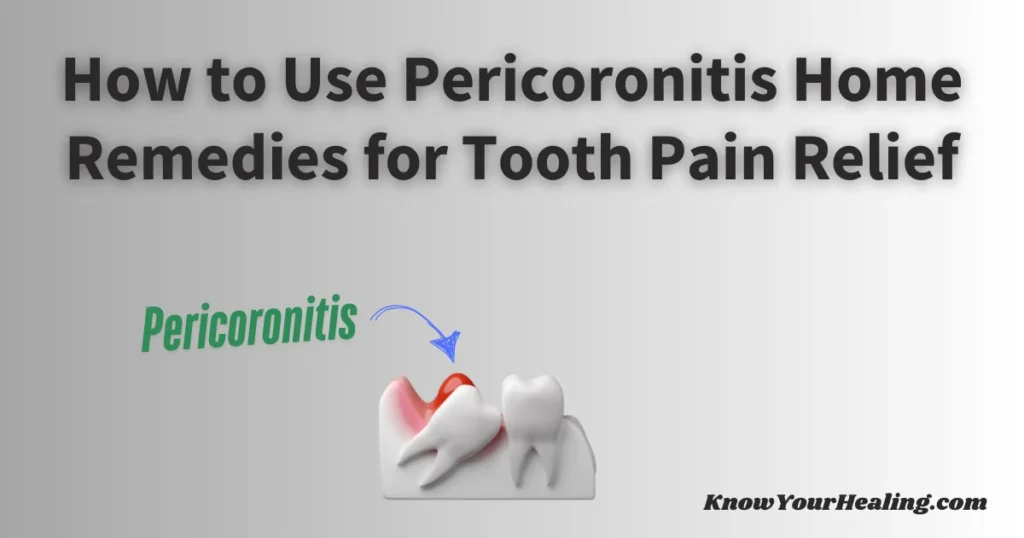Home remedies for bunions pain are essential for anyone seeking relief without surgery. Many people struggle with the discomfort and inconvenience caused by bunions, but there are effective methods to ease the pain.
This article covers 15 of the best non-surgical home remedies to relieve and improve foot health.
Bunions can be a persistent problem, affecting daily activities and quality of life. From natural treatments to practical exercises, this guide delves into various approaches proven to help manage bunion pain.
You can expect to find information on everything from chamomile-infused soaks to specialized foot exercises.
Each remedy is designed to provide comfort while promoting the foot’s well-being. By exploring these different options, those affected by bunions can take control of their foot health and enjoy a more comfortable lifestyle.
Understanding Bunions

Bunions are bony bumps that develop at the base of the big toe, often causing pain and discomfort. They are common foot problems that impact daily activities.
Several factors contribute to their formation, and it’s important to recognize symptoms early for effective management.
What Are Bunions?
Bunions, also known as hallux valgus, are deformities at the joint where the big toe meets the foot, known as the metatarsophalangeal (MTP) joint.
This condition leads to a bony bump on the side of the foot, which can cause pain and restrict movement. Bunions may cause the big toe to angle inwards, pressing against the smaller toes and resulting in further discomfort.
Bunion pads or toe spacers can provide temporary relief by reducing friction. Over-the-counter bunion correctors also help maintain the correct position of the toe.
Causes and Risk Factors
A combination of genetic and environmental factors often causes bunions. Wearing narrow shoes or high heels that squeeze the toes can contribute to their development.
Individuals with flat feet or a family history of bunions are at higher risk. Conditions like rheumatoid arthritis also increase the likelihood of developing bunions.
Proper footwear, such as wide shoes with enough room for the toes, can prevent the progression of bunions. Choosing shoes that support the foot and reduce pressure on the MTP joint is important.
Symptoms and Diagnosis
The most noticeable symptom of a bunion is the bump at the base of the big toe. This bump can lead to swelling, redness, and soreness around the affected area.
Additionally, individuals may experience stiff joints and limited range of motion in the big toe joint.
Warm soaks or an ice pack can help reduce swelling and alleviate pain.
If one experiences severe pain or difficulty walking, a healthcare provider may recommend further diagnostic tests like X-rays. Early diagnosis is crucial to avoid the need for potential bunion surgery.
15 Best Non-Surgical Home Remedies for Bunions Pain Relief
1. Use Bunion Splints for Toe Alignment

Bunion splints can help correct the position of the big toe. They work by gently pushing the toe back into alignment, which may reduce the bony bump and ease bunion discomfort.
Using a splint regularly, especially overnight, can slow the progression of bunions.
People often wear bunion splints at night for comfort. These splints can keep the big toe joint straight, helping it remain in a healthy position. This might alleviate pressure on the affected joint, reducing pain during daily activities.
While wearing a night splint, pair them with comfortable shoes. Footwear should have plenty of room to avoid extra pressure on the bunion area. Wide shoes are often recommended to keep the bunion from rubbing against the inside of your shoe.
Pairing bunion splints with other non-invasive remedies like bunion pads can offer additional relief. This combination can help cushion the bunion and reduce irritation, allowing temporary relief throughout the day.
A healthcare provider can also recommend using bunion splints and other tools, such as custom orthotics. Tailored orthotic devices offer further support by stabilizing the foot and reducing movement, exacerbating foot problems.
These at-home bunion treatments should be part of a comprehensive care plan. Implementing these solutions with proper footwear can protect against the potential need for bunion surgery.
2. Try Silicone Gel Sleeves for Cushioning
Silicone gel sleeves are a practical solution for bunion discomfort. These sleeves provide cushioning for the affected joint, which can reduce pressure and friction around the bunion.
The gel material conforms to the bony bump, offering a soft barrier between the bunion and the inside of your shoe.
Silicone sleeves can benefit those who wear narrow shoes or high heels, where the base of the big toe often faces extra pressure. They help lessen discomfort during daily activities by providing a small but effective cushion. For many, using these sleeves is part of a broader set of at-home bunion treatments to improve foot health.
Silicone gel sleeves can temporarily relieve bunion pain without bunion surgery. Although they don’t change the toe’s position, they can be used alongside other methods like toe separators or bunion pads. These sleeves are simple to use and fit easily over the bunion area.
A healthcare provider might suggest these sleeves as a conservative treatment option for those dealing with bunion symptoms. They are inexpensive and easy to find in a shoe store or online. Pairing them with comfortable shoes with plenty of room can enhance their effectiveness.
By incorporating silicone gel sleeves into a daily routine, those with bunions can continue desired activities with less pain and improve their quality of life. Regular use can minimize the impact of constant pressure on the second toe and other areas around the bunion.
3. Apply Turmeric Paste for Inflammation Relief
Turmeric paste can be a helpful home remedy for reducing inflammation from bunions. Turmeric contains curcumin, which can help decrease swelling at the base of the big toe.
Applying a paste made of turmeric powder and warm water directly to the affected area can relieve bunion pain.
Mix turmeric powder with warm water to make the paste until it forms a thick consistency. Apply the mixture generously over the bony bump and let it sit for about 20 minutes. Rinse off with water, and repeat the process once or twice daily for optimal results.
Pairing turmeric paste with proper footwear can enhance its effectiveness. Wearing comfortable shoes with plenty of room in the toe box prevents additional pressure on the bunion. Avoiding narrow shoes and high heels can further promote comfort.
If pain persists, it’s advisable to consult a healthcare provider for bunion treatment options. Sometimes, orthotic devices or bunion pads can complement the turmeric paste; offering added support and relief.
Combining this remedy with at-home treatments like an ice pack or toe spacers might be necessary for those with severe bunions. These additional steps can provide temporary relief and ease discomfort during daily activities.
Though turmeric is beneficial, the only way to fully address extreme cases might be by considering surgical procedures. Always discuss with a medical professional before starting any new treatment regimen for foot health.
4. Use Ice Packs to Reduce Swelling
Ice packs are a simple and effective non-surgical home remedy for reducing swelling. Applying an ice pack to the affected area can temporarily relieve bunion discomfort.
Cold therapy works by numbing the pain and decreasing inflammation in the bony bump at the base of the big toe.
For best results, wrap an ice pack in a towel and apply it for 15-20 minutes. This method can help improve the quality of life by easing the pain and allowing for better participation in daily activities. Care should be taken not to apply ice directly to the skin to avoid damage.
Combining this treatment with other at-home remedies, like wearing wide shoes, can relieve pressure.
Wearing shoes with plenty of room can prevent irritation of the bunion area and potentially slow the progression of bunions. Avoiding narrow shoes and high heels is key to reducing extra pressure on the bunion.
People may also consider using bunion pads or splints alongside ice packs for additional support. Custom orthotics or shoe inserts from a foot health specialist can also provide comfort by ensuring the foot is in the correct position. This may help manage symptoms without resorting to bunion surgery.
While ice packs offer temporary relief, they can be part of an effective conservative treatment plan when combined with other nonsteroidal anti-inflammatory drugs or physical therapy. Maintaining a healthy weight and wearing proper footwear can help manage bunion symptoms, improving comfort and foot function.
5. Take Epsom Salt Foot Soak

Taking Epsom salt foot soaks can help ease bunion discomfort. When added to warm water, Epsom salts soothe sore muscles and reduce inflammation around the affected joint.
The soak helps improve blood circulation, temporarily relieving pain caused by the bony bump.
The procedure is simple and can be done at home. Fill a basin with warm water and add Epsom salts per the package instructions. Soak your feet for about 15 to 20 minutes. This is one of the at-home treatments that can offer comfort after a long day.
Regular foot soaks may lessen the severity of symptoms, especially when combined with other nonsurgical treatments like wearing comfortable shoes or using toe spacers. Soaks also prepare the feet for further care, such as applying bunion pads or using ice packs for targeted pain relief after soaking.
While foot soaks can provide relief, they should not replace medical treatment for severe cases. Those with persistent pain should consult a healthcare provider for a comprehensive bunion treatment plan, which may include lifestyle adjustments or even bunion surgery if needed.
6. Wear Shoes with Proper Arch Support
Proper footwear plays a significant role in managing bunion pain. Shoes with good arch support help reduce pressure on the affected joint.
This can benefit those who experience discomfort at the base of the big toe. Wearing shoes designed for support can alleviate some of the pain associated with bunions and improve foot health.
When selecting shoes, look for options that provide enough room for the toes. The best way to accommodate a bony bump is to choose wide shoes with a spacious toe box.
This prevents the constant pressure that narrow shoes might cause. Comfortable shoes can protect against additional foot problems and provide bunion relief.
Combining proper shoes with other treatments, such as toe spacers or bunion pads, can enhance comfort. These accessories create extra space and reduce friction inside of your shoe.
In some cases, shoe inserts or custom orthotics can reduce bunion symptoms and improve foot alignment and overall quality of life.
Consistently opting for shoes with low heel and soft soles can also help. High heels can worsen bunion issues by increasing pressure on the football.
The proper footwear minimizes this extra pressure and supports better blood circulation, making daily activities more manageable. In the case of severe bunions, consulting with a healthcare provider for further bunion treatment options remains necessary for long-term relief.
7. Use moleskin to prevent rubbing
Moleskin is a practical way to reduce friction on the bunion. It helps cushion the bony bump on the side of your foot, preventing irritation.
This can be particularly helpful when wearing shoes that may otherwise cause discomfort due to constant pressure.
Applying moleskin is easy and offers potential relief from bunion pain. Cut a piece of moleskin slightly larger than the affected area and place it over the bunion to minimize rubbing and discomfort during daily activities.
This is a simple home remedy to improve foot comfort without bunion surgery.
While moleskin provides a temporary solution, other nonsurgical treatments are also considered. For example, wearing wide shoes ensures plenty of room for the bunion.
Shoe inserts or custom orthotics can also help maintain the correct position of the big toe joint and reduce bunion symptoms.
These measures can enhance the quality of life for those dealing with bunions.
For added relief, individuals may combine moleskin with other methods, like using an ice pack to reduce swelling or pain. Consistent use can offer noticeable improvements, though it is always advised to consult a healthcare provider for a comprehensive treatment plan.
Moleskines are available at most drugstores or online, making them accessible options for many seeking bunion pain relief.
By integrating moleskin into their routine, individuals may find significant relief from the discomfort caused by bunions while continuing their normal activities comfortably.
8. Practice Toe Stretches and Exercises
Practicing toe stretches and exercises can significantly relieve bunion pain. These exercises help improve the flexibility and strength of the muscles around the big toe joint.
Regularly engaging in these activities can ease discomfort and slow the progression of bunions.
One effective stretch involves spreading the toes and holding the position for several seconds. This improves flexibility and may help reduce the strain on the affected joint.
Another beneficial exercise is making slow, circular movements with the toes, which promotes better blood flow and loosens stiff joints.
Incorporating exercises like toe curls, which involve bending and straightening the toes to strengthen the surrounding muscles, is also helpful.
Consistent practice of these movements can support the base of the big toe and alleviate pressure.
For those with severe bunions, these exercises might provide some relief, but they should be complemented by other at-home treatments, such as using toe spacers or bunion pads.
These additional measures can help maintain the correct position of the toe and reduce extra pressure from narrow shoes.
Engaging in foot-focused activities as part of daily routines can improve foot health and enhance overall well-being.
Integrating these stretches into one’s lifestyle to maximize comfort and extend the time before considering more invasive procedures like bunion surgery is beneficial.
9. Incorporate over-the-counter pain relievers
Over-the-counter pain relievers can offer significant relief for bunion discomfort. Nonsteroidal anti-inflammatory drugs, like ibuprofen and naproxen sodium, can reduce swelling and pain at the base of your big toe.
These medications help alleviate the symptoms associated with the bony bump known as a bunion.
While providing temporary relief, these medications also enhance daily activities by minimizing pain levels.
They allow individuals with bunions to continue performing tasks without significant interruptions.
Despite their benefits, users should follow recommended dosages to avoid potential side effects and consult a healthcare provider for severe pain.
Combining these medications with bunion pads or cold therapies, such as an ice pack, can be effective for targeted relief.
Applying a cold pack to the affected area daily reduces swelling and numbs pain.
These methods and proper footwear choices help lower the extra pressure on the bunion.
Choosing comfortable shoes with plenty of room prevents further irritation of the bunion. Individuals should avoid narrow shoes and opt for wide shoes or shoe inserts that accommodate the bunion.
This proactive approach aids in slowing the progression of bunions.
You can refer to Mayo Clinic’s recommendations for more medical advice on using over-the-counter pain relievers for bunions.
Combining these strategies with other non-surgical home remedies leads to comprehensive bunion management.
Persistent foot health maintenance helps maintain the quality of life and reduces the need for more invasive options like bunion surgery.
10. Use cayenne pepper compress for pain

Cayenne pepper compresses can help manage pain related to bunions. The capsaicin in cayenne reduces pain by interfering with substance P, a chemical that transmits pain signals to the brain.
This makes cayenne pepper a beneficial home remedy for reducing bunion discomfort.
Mix cayenne pepper and compress with warm water to create a paste. Apply this to a cloth and place it on the affected area, such as the base of your big toe, for 15-20 minutes.
This method can improve blood circulation and provide temporary relief.
A cayenne pepper compress can be part of a comprehensive at-home treatment plan. It is beneficial with other nonsurgical treatments, such as ice packs or over-the-counter pain relievers.
These options help manage symptoms and improve daily activities, enhancing foot health.
For best results, combine cayenne pepper compresses with comfortable shoes that provide enough room to reduce extra pressure on bunions.
Avoid narrow shoes or those with high heels, as they can worsen the condition. This will help prevent the progression of bunions and improve the quality of life.
Consulting a healthcare provider is advisable if bunion symptoms persist, ensuring the best way to manage and alleviate severe pain.
While home remedies can offer relief, professional guidance ensures the treatment aligns with medical needs for the best care possible.
11. Opt for nighttime bunion aligners
Nighttime bunion aligners can provide comfort for those dealing with bunion symptoms. These aligners gently stretch and reposition the big toe joint into a more natural alignment.
Doing so helps reduce the progression of bunions and relieve discomfort that often occurs throughout the day.
Using bunion aligners at night is a form of conservative treatment. They have been recognized as helpful in alleviating extra pressure that builds up at the base of the big toe while resting.
This non-surgical option is simple and effective, making it a valuable addition to an at-home bunion treatment plan.
For individuals who regularly wear high heels or narrow shoes, nighttime bunion aligners can help counteract the pressure these shoes place on the foot.
They gently adjust the toe position, promoting better foot health over time.
Many find that combining aligners with other home remedies, like ice packs or bunion pads, enhances their bunion relief.
These complementary treatments can reduce inflammation and soothe the affected area, leading to better sleep and improved daily activities.
While nighttime bunion aligners offer temporary relief from bunion discomfort, they are not the only way to address severe bunions.
Consulting with a healthcare provider about bunion treatment options is important for those experiencing significant pain or considering surgical procedures.
12. Explore chamomile-infused foot baths
Chamomile-infused foot baths can provide soothing relief for bunion discomfort. Known for its anti-inflammatory properties, chamomile helps reduce swelling at the base of the big toe.
This herb is often used in warm water soaks, promoting relaxation and easing foot tension.
To create a chamomile soak, start by brewing a strong tea using chamomile flowers. Let it steep, then mix it with warm water in a basin.
Submerge your feet in the bath, fully covering the affected joint. This method can support better blood circulation and reduce bunion pain after a long day.
Combining chamomile with other remedies like toe separators, bunion pads, or custom orthotics can maximize foot health.
These at-home treatments offer noninvasive alternatives to bunion surgery, helping to manage bunion symptoms and minimize the progression of bunions without constant pressure from shoes.
Wearing comfortable shoes with plenty of room for your toes can complement the chamomile soak, ensuring better outcomes.
By integrating these practices into your routine, you might find significant improvement in managing bunion symptoms and maintaining a better quality of life.
13. Consider wearing toe separators
Toe separators can help relieve bunion discomfort by gently realigning the toes. They create space between each toe, reducing pressure on the bony bump known as a bunion.
This simple device can improve foot health and provide temporary relief from pain.
Using toe separators regularly can help ease the constant pressure caused by narrow shoes and prevent further toe shifting.
People with bunions should ensure their footwear has plenty of room to accommodate these inserts comfortably.
Incorporating toe separators into daily activities, especially after a long day, may decrease bunion symptoms.
They can be especially beneficial alongside non-surgical treatments like proper footwear and protective bunion pads.
For those experiencing severe pain, it’s advisable to consult a healthcare provider for personalized bunion treatment options.
14. Try ginger compresses for natural relief
Ginger compresses can offer natural relief for bunion pain. Their anti-inflammatory properties might help reduce swelling in the affected area.
To make a ginger compress, grate fresh ginger and wrap it in a cloth. Apply the compress to the bunion for about 15-20 minutes. This method is similar to using an ice pack for temporary relief.
A warm ginger compress can stimulate blood flow and reduce stiffness in the big toe joint. The warmth may also help with sore muscles and any bony bump around the bunion area.
It’s a simple home remedy with regular application that may improve foot health.
For best results, incorporate ginger compresses into a routine and other bunion treatments, such as wearing comfortable shoes and using bunion pads or toe spacers.
A healthcare provider might also suggest custom orthotics to prevent further progression of bunions and improve daily comfort.
Using ginger as a comprehensive approach can relieve bunion discomfort and enhance quality of life.
While it might not replace more intensive treatments like bunion surgery, ginger compresses can be valuable in managing symptoms and keeping the affected area more comfortable.
15. Use orthotics for improved foot support
Orthotics can significantly enhance foot support, especially for individuals dealing with bunions. These custom orthotics are designed to fit the unique shape of your foot. They can help alleviate bunion pain by reducing pressure on the affected joint and area custom orthotics.
They provide extra cushioning and support to the base of your big toe, promoting better alignment.
Wearing orthotic devices can also help slow the progression of bunions. By supporting the foot arch, these inserts relieve strain on the bunion and improve overall foot health.
Orthotics can also help with other foot problems related to bunions, such as flat feet or stiff joints.
Incorporating orthotics into your daily activities can relieve bunions and allow you to stay active without discomfort. They help distribute weight more evenly, minimizing extra pressure on the bony bump at the base of your big toe.
For many, orthotics are a practical alternative to bunion surgery, offering an effective and non-invasive solution. Pairing them with comfortable shoes can further reduce bunion pain and enhance mobility.
Always consult a healthcare provider to ensure the right fit and type of orthotic for your specific needs.
Home Remedies for Bunions Pain: Natural and Non-Invasive Treatments

Home remedies for bunions pain can provide relief without surgery. These treatments focus on reducing pressure, improving foot health, and managing discomfort effectively.
Maintaining a Healthy Weight
A healthy weight can reduce extra pressure on the feet, especially at the base of your big toe, where bunions usually form. Excess weight may worsen bunion symptoms by causing more strain on the bunion area during daily activities.
Maintaining an appropriate weight can decrease the likelihood of developing severe bunions.
Regular exercise and a balanced diet help manage weight, which supports overall foot health.
Choosing shoes with enough room for the toes and avoiding high heels can also help limit pressure on the feet. Opt for wide shoes with soft soles to give plenty of space for any bony bumps caused by bunions.
Improving Blood Flow with Proper Foot Care
Proper foot care enhances blood circulation, improving foot health and decreasing bunion discomfort.
Soaking feet in warm water combined with Epsom salts can be particularly soothing. Massaging the affected area and practicing foot exercises like toe curls or using toe separators can also enhance blood flow and maintain foot flexibility.
An ice pack may reduce swelling by constricting blood vessels, providing temporary relief.
It’s advised to use cold pack therapy in short intervals to prevent skin damage.
Wearing comfortable shoes with ample space for the toes helps avoid constant pressure on the bunion.
Nonsteroidal Anti-Inflammatory Drugs for Pain Management
Nonsteroidal anti-inflammatory drugs (NSAIDs) like ibuprofen or naproxen sodium serve as effective remedies for reducing pain and inflammation at the bunion site.
These over-the-counter options can assist in managing bunion pain after a long day or during flare-ups.
Using bunion pads and splints might also provide consistent pressure relief, allowing the foot to maintain a better position.
Consulting a healthcare provider is essential to ensure that these treatments align with individual health needs, especially in the case of severe pain or when bunion surgery is considered a treatment option.
When to Consult a Professional

Bunion pain can often be managed with at-home remedies such as comfortable shoes, bunion pads, and ice packs. Despite these methods, there are times when it is crucial to seek a doctor’s advice.
If the bunion pain disrupts daily activities or bunion symptoms become severe, it’s time to consult a healthcare provider.
Even after trying remedies like toe spacers and proper footwear, persistent pain requires professional help.
A bunion that causes numbness or inflammation might need medical treatment, mainly if it affects the big toe joint.
Consult a foot specialist if blood circulation issues or a bony bump worsens.
Changing to fitted shoe inserts or custom orthotics sometimes does not bring relief. When this happens, a medical evaluation can help explore bunion treatment options, including bunion surgery.
Severe bunions, or if you notice a shift or imbalance that affects the second toe, should be assessed by a professional. This can prevent further foot problems or long-term damage.
Similarly, if your bunion pain leads to a noticeable reduction in your quality of life, seeking advice from an expert could be necessary.
Final Thoughts
Home remedies for bunions pain can offer significant comfort and relief without surgery. However, while these methods may help reduce discomfort and swelling, they won’t eliminate bunions.
Many effective remedies include exercises, massage, and proper footwear. Incorporating toe points and curls or toe spread-outs can be beneficial for pain relief. Simple massage techniques can help relax the feet and improve flexibility.
It’s also helpful to apply natural anti-inflammatory solutions.
For example, warm castor oil applied to the affected area may reduce inflammation and soothe painful symptoms. Over-the-counter pain relievers like nonsteroidal anti-inflammatory drugs can also be beneficial.
Herbal remedies and lifestyle changes should not replace professional advice. Regular check-ups with a healthcare provider or podiatrist are important to monitor bunion progression and adjust the treatment plan as needed.
Key Takeaways:
- Regular exercise: Try toe points and curls or toe spread-outs.
- Massage therapy: Regular massaging can improve foot flexibility.
- Warm compresses: Use warm castor oil to reduce inflammation.
- Proper footwear: Shoes with a wide toe box can prevent discomfort.
- Pain management: Use over-the-counter pain relievers if needed.
Frequently Asked Questions
Many people seek ways to relieve bunion pain without surgery. This section covers common questions about how certain activities, treatments, and remedies can affect bunions.
What foods aggravate bunions?
Certain foods can cause inflammation, which might worsen bunion pain. Too much red meat, processed foods, and sugar can increase inflammation.
Opting for a balanced diet rich in fruits, vegetables, and whole grains may help reduce inflammation.
Is walking barefoot good for bunions?
Walking barefoot can sometimes help strengthen the muscles in the feet, potentially improving foot alignment. However, those with painful bunions might find that barefoot walking increases discomfort. Listening to your body and consulting with a healthcare professional is essential.
What can you put on a bunion to make it feel better?
Applying ice packs or using topical anti-inflammatory creams may help reduce bunion pain. Over-the-counter pain relief creams and gels can also be helpful. Using protective pads or cushions might also alleviate pressure on the bunion.
Can you straighten a bunion without surgery?
While surgery is the only way to correct a bunion permanently, non-surgical methods can help manage symptoms.
Wearing supportive shoes, using orthotics, and performing specific foot exercises may improve foot alignment.
Stretching and strengthening exercises can also be helpful.
How can I stop bunion pain at night?
Elevating the foot and using a cold compress before bed might reduce swelling and pain at night. Sleeping with a specialized bunion splint can help maintain proper toe alignment during sleep.
Sticking to a consistent routine for better long-term relief is also advisable.
Is there a bunion corrector that actually works?
Some bunion correctors are designed to provide temporary relief by improving toe alignment. While they can’t fix a bunion permanently, they may help decrease pain when used consistently. Products such as toe separators, night splints, and orthotic inserts are popular.
Why is my bunion throbbing?
A bunion might throb due to inflammation or increased pressure on the joint. Prolonged standing, tight shoes, or an injury could also cause discomfort. Ice packs and over-the-counter pain relievers can help reduce swelling and throbbing.
Is walking bad for bunions?
Walking is generally not harmful for bunions. It should be done in moderation and with proper footwear.
Shoes with a wide toe box and good arch support are recommended to avoid additional pain. Overdoing it, especially with ill-fitting shoes, could exacerbate the condition.
How to correct a bunion naturally?
Natural management includes exercises to improve flexibility and foot strength.
Wear supportive footwear and custom orthotic inserts might prevent the bunion from progressing. These methods focus on symptom management rather than complete correction.
What can be mistaken for bunion pain?
Conditions such as arthritis, gout, or tendinitis may mimic bunion pain. A professional diagnosis is crucial for determining the exact cause of foot pain.
Consulting a healthcare expert can ensure the proper treatment approach.




